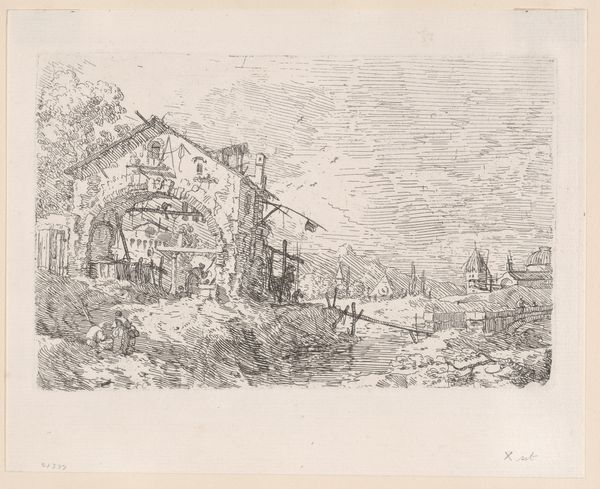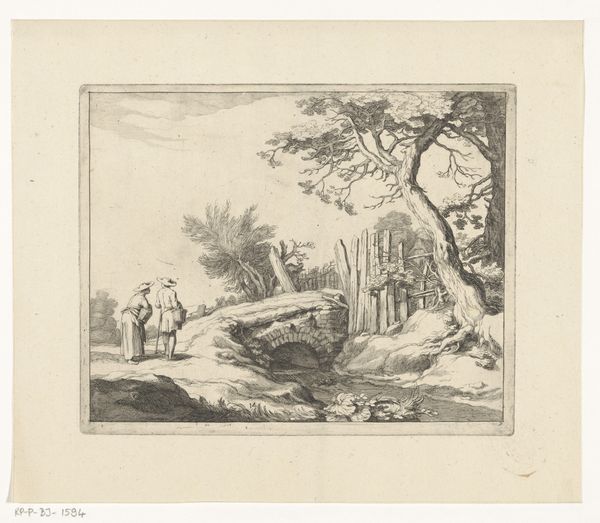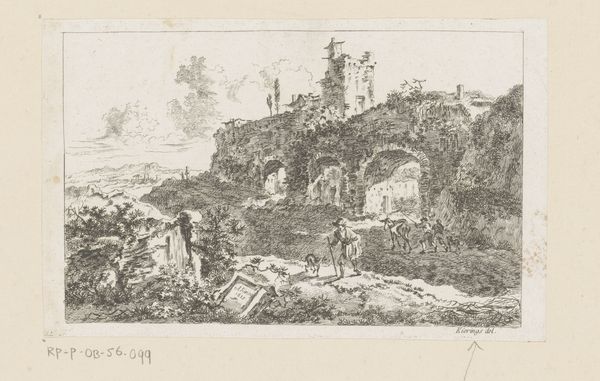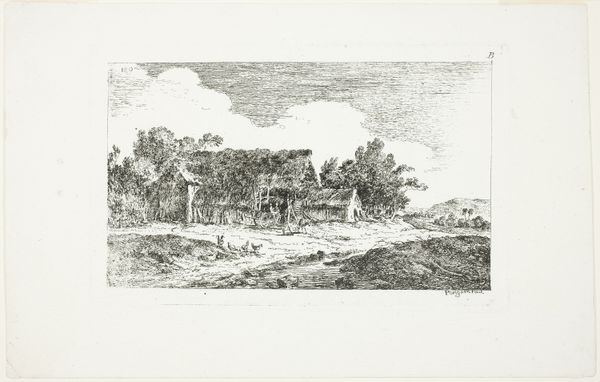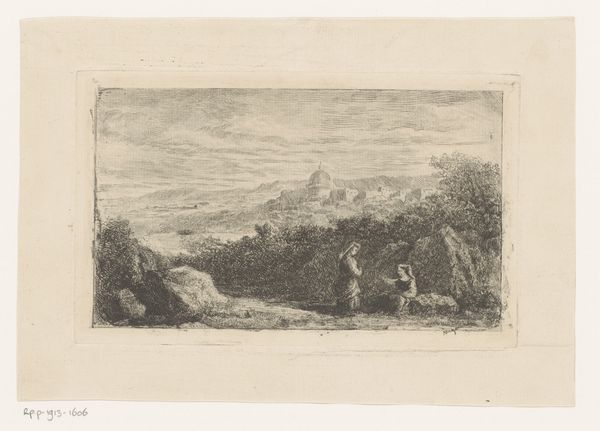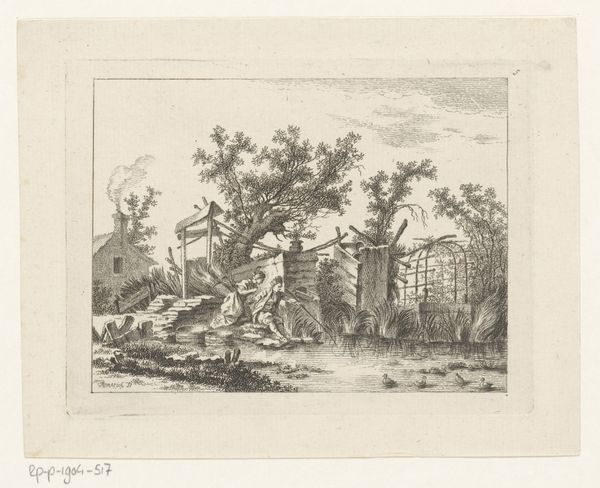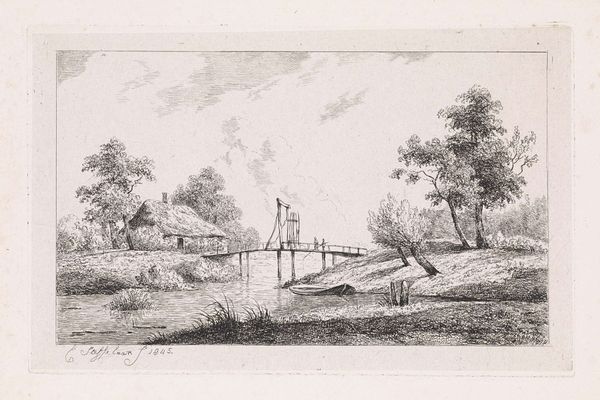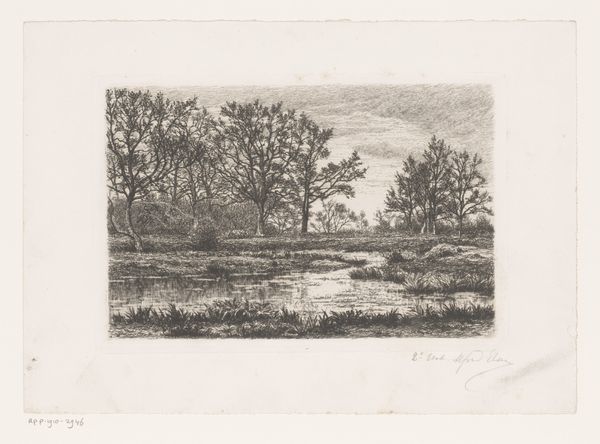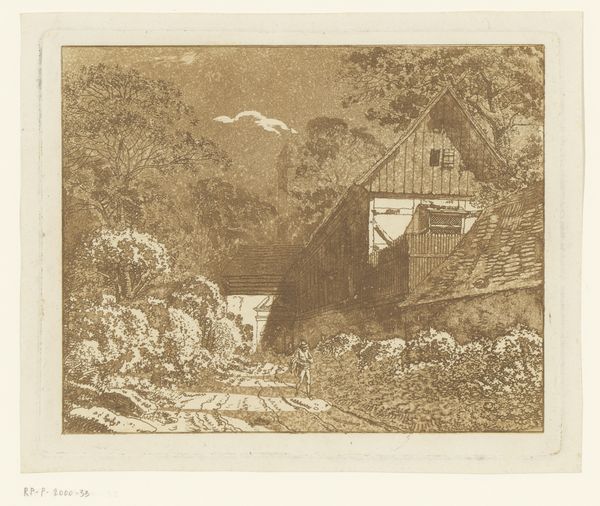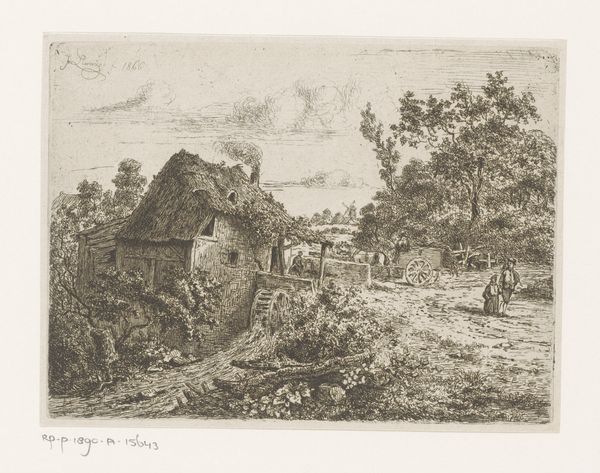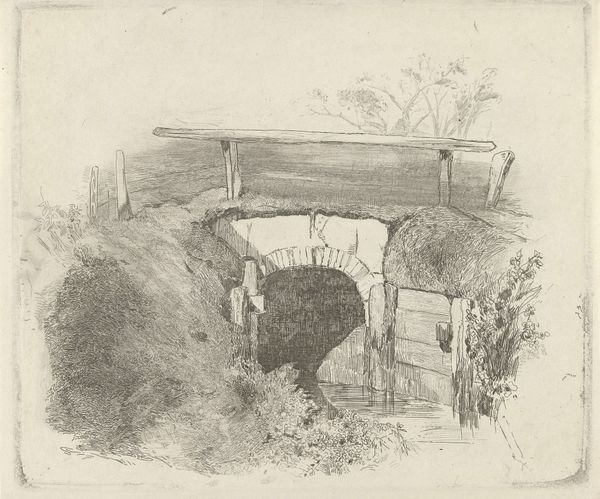
Dimensions: height 299 mm, width 459 mm
Copyright: Rijks Museum: Open Domain
Curator: Today, we are observing “Weiland met grazend vee, links een boerderij,” a piece realized with ink and pen, conceived sometime between 1872 and 1931 by Willem de Zwart. Curator: It evokes such a stillness. The monochromatic palette seems to amplify the intricate line work that builds depth and form. A sort of melancholic calm settles in, doesn’t it? Curator: It certainly does, but I wonder, can we delve into what constitutes this rural idyll? The grazing cattle, the farm, all depicted by De Zwart are testaments to Dutch society and their livelihoods. The period during which the drawing was crafted, a moment when agricultural life was facing major shifts, also begs exploration. Curator: I see the perspective you are charting. Yet, consider the formal elements. Look at how de Zwart orchestrates space, employing dense strokes for the foliage at the right, while rendering the open fields with such economy of line. Curator: Yes, the structure offers a glimpse into artistic practices of the time. Impressionism often depicted pastoral scenes reflecting socio-economic contexts, offering idyllic pictures even if this clashed with a grim reality for agricultural workers. Curator: It's fascinating how these textures, achieved purely with lines, create not just form but also the feel of light and air, or even a sense of a breeze ruffling through those trees. Do you find a kind of interplay between absence and presence at work here? Curator: Very much so. Consider too how this landscape aesthetic served nationalistic agendas in a period when defining “Dutch identity” was both a cultural and political project. The subject of agrarian life takes center stage in forging ideas about land and labor, and it is very much present here in De Zwart’s artwork. Curator: Precisely. The density of mark-making guides the eye, structuring our experience—drawing us into this scene where rural life seems captured. The more I observe, the more I realize that it is exactly what the artist chose to include, and, vitally, how. Curator: De Zwart offers us a framed rural scene that invites interrogation – and compels us to discuss representations, their social dimensions, and their potential. Curator: Yes. There's so much going on beneath its seeming simplicity!
Comments
No comments
Be the first to comment and join the conversation on the ultimate creative platform.
